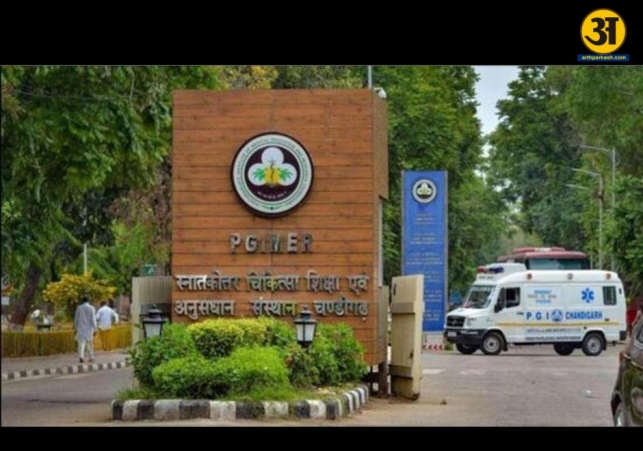

Project Sarathi, a community service programme that started at PGIMER, Chandigarh, in May 2024, is now being expanded to 1,467 hospitals across India. The project is aimed at helping patients in hospitals by providing them with support through trained student volunteers. These volunteers assist patients in finding their way inside hospitals, managing crowds, and making the outpatient department (OPD) process smoother.
The project has been so successful at PGIMER that the Union ministries of health and youth affairs decided to take it nationwide. Under a larger programme called “Seva Se Seekhen”—which means “Learn through Service”—Project Sarathi will now be part of an experiential learning programme (ELP). This programme is listed on the MyBharat portal, a government platform focused on youth development and engagement.
At its core, Project Sarathi is designed to make hospital visits easier for patients, especially those who may not know how to navigate large and confusing hospital buildings. Volunteers, mainly students from local schools and colleges, guide patients to the right departments, help them understand the process, and support staff in managing crowds. This results in less confusion, shorter wait times, and a better overall experience for patients.
In PGIMER, where the programme first began, 816 student volunteers from 18 different institutions—including 10 colleges and 8 schools—have already given over 50,000 hours of service. Their work helped reduce the average patient wait time from 4.2 hours to 2.8 hours, according to a study by PGIMER’s community medicine department. This impact proved that even non-medical support can make a huge difference in hospital operations.
With its success in Chandigarh, the central government approved the implementation of Project Sarathi in 1,467 hospitals across 34 states and Union Territories, including big and small cities. Out of these, 551 hospitals have already completed the implementation between September 17, 2024, and May 31, 2025. Currently, 95 hospitals are running the programme, with 81 of them continuing as permanent centres for health-related volunteering.
The programme is now supported by both the Ministry of Health and Family Welfare and the Ministry of Youth Affairs and Sports, showing that it is being taken seriously at the national level. The states and Union Territories that have either completed or are running the project include:
Andaman and Nicobar Islands
Andhra Pradesh
Arunachal Pradesh
Assam
Bihar
Chandigarh
Chhattisgarh
Delhi
Goa
Gujarat
Haryana
Himachal Pradesh
Jammu & Kashmir
Jharkhand
Karnataka
Kerala
Lakshadweep
Madhya Pradesh
Maharashtra
Manipur
Meghalaya
Odisha
Puducherry
Punjab
Rajasthan
Tamil Nadu
Telangana
Tripura
Uttar Pradesh
Uttarakhand
This large-scale rollout means that hospitals from the remotest corners to major urban centres will now benefit from Project Sarathi’s volunteer model. As of now, there are 6,444 student volunteers actively involved in the programme across the country. These volunteers are not only helping patients but also gaining practical experience and learning the importance of community service and empathy.
ALSO READ: PU says online affiliation system to speed up process
The data from PGIMER proves the value of this initiative. With proper guidance and student support, patient wait times were reduced by more than an hour. This means that patients—many of whom travel long distances—can now get faster treatment and return home sooner. Volunteers also help elderly patients, disabled individuals, and those visiting a hospital for the first time.
For students, this programme is more than just volunteering—it’s an opportunity to learn real-life problem-solving, communication skills, and team coordination. They get to interact with doctors, nurses, and patients and understand the functioning of a large hospital. This exposure helps many of them decide if they want to join the healthcare field in the future.
Project Sarathi has shown how youth power can be used for public good. It solves a very basic but important issue—patients feeling lost or confused in hospitals. By using student volunteers, the project also promotes a sense of service, discipline, and learning among the youth.
By extending the programme to more than a thousand hospitals across India, the government is making a strong statement that healthcare is not just about treatment, but also about patient comfort and dignity. With support from schools, colleges, and local communities, Project Sarathi could become a national movement for better hospital experiences and youth engagement.
This model could be replicated in other public services too, where guided support can make a big difference. For now, Project Sarathi stands as a shining example of how simple ideas, powered by community support, can create real and lasting impact.